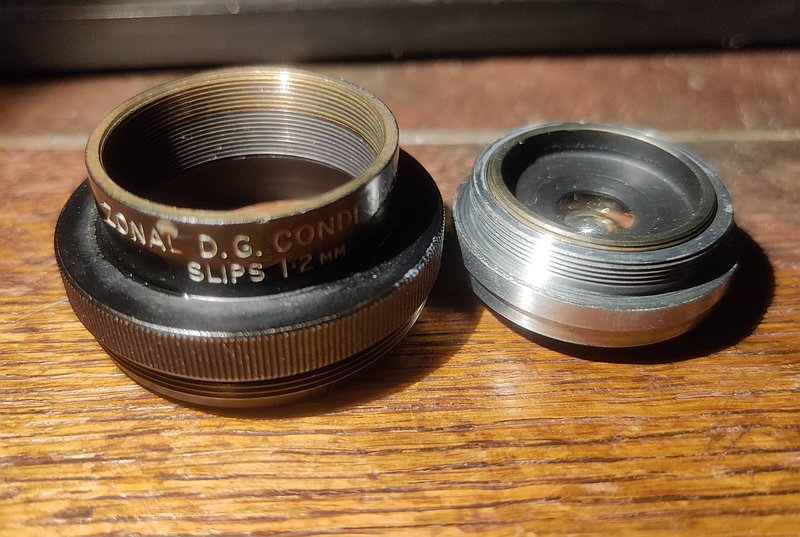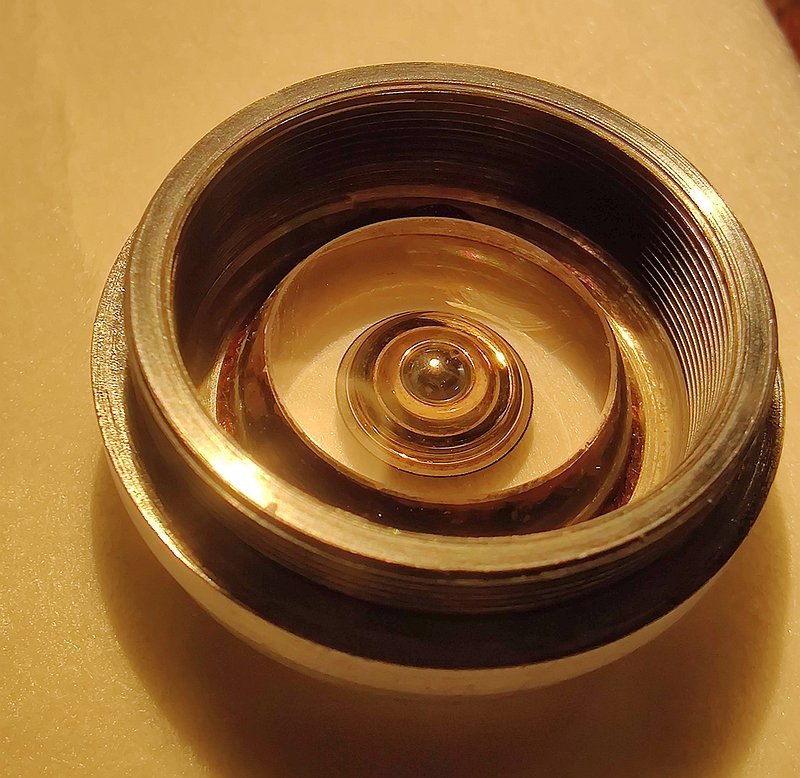I am always re-inventing the wheel, every day, in every way

Indeed, I have just come across Simon Gage's '"Modern Dark-field Microscopy" .. it's all in there (nearly) ..a good read..even a nice sounding way to size darkfield patch stops :
https://archive.org/details/jstor-32218 ... 1/mode/2up
Re. the Zonal oil DF condenser ..I managed to take mine apart (fools rush in...)
The silvered head removed from its black tube:

- Oil Zonal silver top unscrewed 800.jpg (101.05 KiB) Viewed 69120 times
(I am not sure that I could have done this without MichaelG's PlusGas formula 21 ..I have been using this stuff for about a month and it is very good.....Thanks! )
On the the underside of the optical head there is a stop that unscrews out (mine just unscrewed by pressing a finger on it and turning):

- Oil Zonal back plate screwed out.jpg (110.11 KiB) Viewed 69120 times
Leaving, what looks to me, like a solid block of glass with a pip bored into its front:

- Oil Zonal glass element 800.jpg (126.99 KiB) Viewed 69120 times
My zonal has a round black patch on the front/top of it and this hides the pip ..maybe if your version doesn't have a black circle this is the refractive element you can see (but I cant) ?
The black patch seems to live undeneath a coverglass cemented to the block, mine is delaminating away from it a bit.
What one sees when looking down into the top of the condenser looks to be the top surface of the unscrewable stop.
I guess that oil could weep in and sit between the glass block and the stop (??) presumably these were used in a professional setting and often with a high wattage incandescent illuminator, which could heat them up quite a bit.